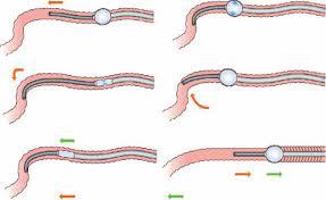Single Balloon Enteroscopy is a procedure that allows doctors to examine the small intestine. Follow along for everything you need to know about the procedure.
When Single Balloon Enteroscopy used
A Single Balloon Enteroscopy is used to examine, diagnose, and treat diseases in both the upper and lower GI tract. The advantage of the procedure is that it gives access to the entire small intestine, which is around 20 feet long on average. Other procedures cannot provide reach to effectively examine or treat the small intestine. The Single Balloon Enteroscopy lets doctors get access and live imaging of parts of the GI tract that are otherwise inaccessible. This is important for examining sources of GI bleeding, taking biopsies, removing polyps or foreign objects, and enlarging strictures.
Preparing for the procedure
There are a few important pre-operative steps you need to take prior to a Single Balloon Enteroscopy. You will need to discuss any medications you are taking with your doctor. Certain blood-thinning medications can pose risks of excessive bleeding during the procedure. Additionally, if you take insulin, you may need to adjust timing and dosage leading up to the procedure.
You will need to adhere to a clear liquid diet the day before the procedure. You will also be asked to refrain from eating starting the midnight before the procedure. In addition to these steps, you will need to use a cleansing routine the day before your procedure. This entails a liquid laxative that clears and prepares your bowels for examination. Your doctor will give clear instructions for all of these important steps leading up to your Single Balloon Enteroscopy.
During Single Balloon Enteroscopy
On the day of your procedure, you will first check in to a pre-op area where nurses will place an IV and take medical information. You will also meet with an anaesthesiologist to discuss sedation during the procedure.
The procedure takes around 60-75 minutes total. Your doctor will use a balloon system consisting of a flexible endoscope with a camera, an overtube, and an attached inflatable balloon at the tip of the overtube. They first insert the endoscope down your throat and into your intestine (you will have a mouthguard to protect your teeth and the endoscope). They will inflate the balloon to anchor the overtube, and then advance the endoscope further into your small intestine. Cyclically, they can then deflate the balloon, advance the overtube, reinflate the balloon, withdraw the overtube to shorten and straighten your small intestine, and advance the endoscope further. This pleats the small intestine over the overtube, shortening the small intestine’s length.
The endoscope is also able to inflate your intestine, rinse it with water, and guide biopsy and cautery instruments. Since you will be sedated, given pain medications, and given a local oral anaesthetic, the procedure is pain-free.
After the procedure
Following the procedure, you will return to a post-op area to recover from sedation. Nurses will monitor you for potential complications. After recovery, your doctor will discuss findings with you, although some results for biopsies and polyp removal can take a few more days to be finalized). You should not drive, make important decisions, or operate machinery for 24 hours after the procedure due to sedative effects.
You may feel bloated for a few hours after the procedure, which is normal. There are few severe complications and risks associated with Single Balloon Enteroscopy. On rare occasions, the procedure can cause perforation, excessive bleeding, and complications from sedation. If you experience excessive rectal bleeding, severe abdominal pain, or a fever, contact your doctor immediately.
Our experienced team at GHP has years of experience performing Single Balloon Enteroscopies We can help establish the best plan of care for your situation. Contact any of our office locations to learn about the options we offer and schedule an appointment today.



